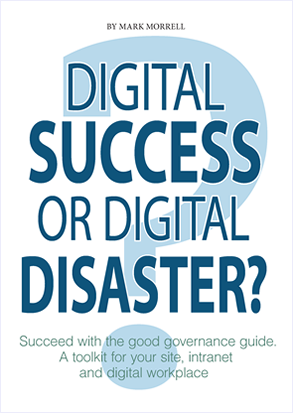Two years ago I published my book ‘Digital success or digital disaster?‘ that unlocked how you can successfully manage your intranet by following the examples and practical advice given in each chapter.
I avoided describing specific technologies however, one technology is quite pervasive – Microsoft SharePoint – and I have encountered it many times, both good and bad, in my work. Wherever I go people ask me “How do I manage SharePoint successfully?”.
My answer is covered in a new chapter that explores the pitfalls and benefits of using SharePoint to underpin your intranet, and sets out ways to make sure you implement successfully using the principles that I set out apply to intranets.
Everyone will have heard of a horror story of how an intranet has failed or succumbed to the perils of SharePoint. But people will also have seen examples of how SharePoint has transformed an intranet quickly and with little effort.
Somewhere in between these two versions lies the truth that most intranet managers have experienced. It seems to take a lot of effort, hard work and time to implement SharePoint. And that just seems to be the beginning of the daily challenges you have to act upon.
SharePoint has been described as being like the best sweet shop in town. Anyone can have all these sweets on all the shelves to try. The problem is that you are outside the door to the shop and saying “Be careful what you try. Too many sweets can be bad for you.”
That analogy has proven to be oh so true, time and time again. Even after many new versions and enhanced features in SharePoint, improving what it offers, intranet managers still have a feeling of trepidation when confronted with SharePoint, especially for the first time. So how do you educate and communicate with people who use SharePoint? How do they use the right features in the right manner? How do you adopt the right approach so everyone benefits?
It can be done but it is not easy. I know from my experience shared in this new chapter. I will show you the secret of a well-managed intranet using SharePoint, setting out the steps you need to take to achieve this without too much hard work, missed deadlines or sleepless nights!

